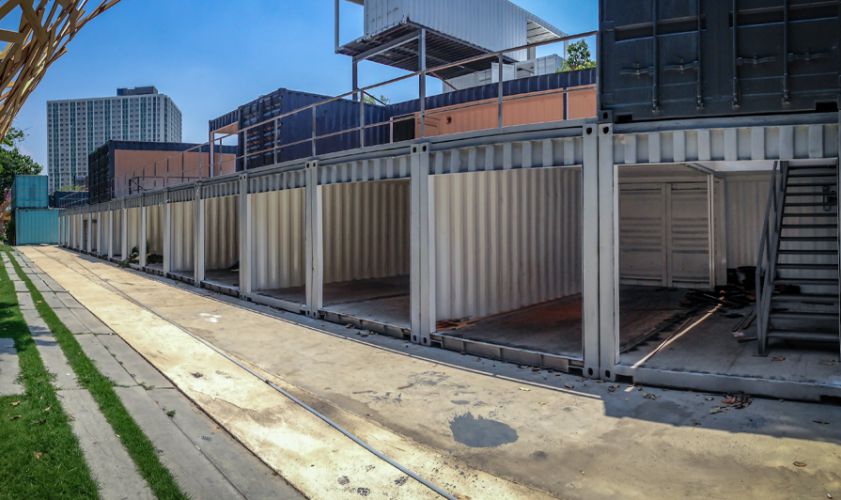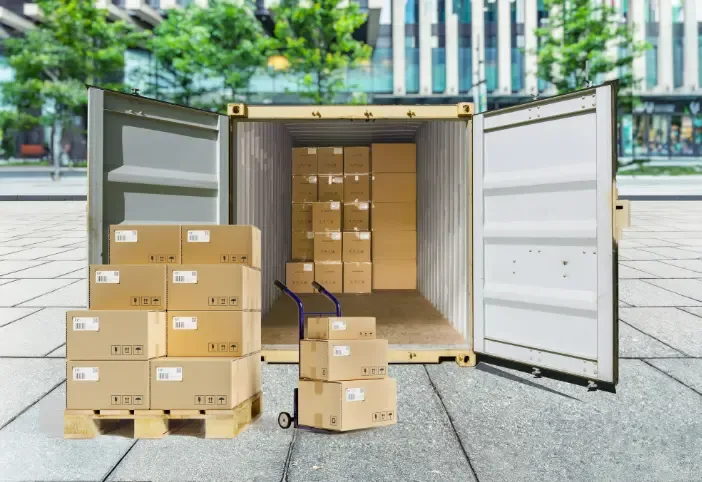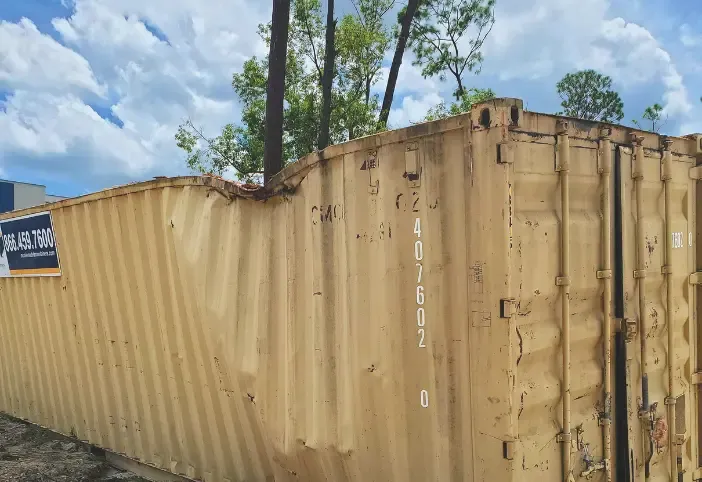- Rent, Lease, or Purchase
- |
April 10, 2021
Why Use Shipping Containers for Your Next Garage

Shipping containers have exploded onto the scene as easy and affordable solutions for construction needs. When it comes to strength, space, durability, and costs, shipping containers far exceed the draws of traditional construction. These units have been used as temporary classrooms, swimming pools, retail spaces, and more.
More recently, people have been looking to convert shipping containers into home garages. Read on to learn about shipping container garages. We'll walk you through the benefits they offer and how to begin a project of your own.
The Benefits of Creating a Shipping Container Garage
A shipping container garage provides a host of benefits over traditional construction. Check out the list below to learn why an increasing number of people are turning to conex boxes for car storage.
Durability
Shipping containers are made of Corten steel panels. The exterior coating on the panels protects them from severe weather conditions and elements. So long as regular maintenance is performed, these containers can last up to 25 years.
Speed
Storage containers are constructed quickly, in offsite facilities. After placing your order, they can be delivered to your home in as little as one business day. If you are not planning on making any modifications to the container, you can have your garage ready to go in just minutes after its arrival.
Flexibility
A lot of people forget that containers are entirely portable. Whether you're working with just one container or two containers that have been joined together, you'll be relieved to discover that these units can be easily disassembled for transport and reassembled after they've been delivered.
Cost
Turning a shipping container into a garage costs much less than a traditional construction solution would. Surely, that's something we can all appreciate. Remember, a shipping container will be delivered preassembled. That means you don't have to worry about investing in additional materials, such as a garage door, roof, or exterior siding.
How to Create a Shipping Container Garage
Converting a shipping container into a garage is a faster and more economical process than that of traditional construction. Still, it requires planning. Check out the information below to learn what you need to do in preparation for your shipping container garage.
Select Your Size
Storage containers come in all different shapes and sizes. Mobile Modular Portable Storage offers 10-, 20-, 24-, and 40-foot storage containers. Beyond that, we offer high-security and double-door options.
Think about your storage needs. If you're looking for storage only, then a 10-foot container should be sufficient. A 20-foot container will be equivalent to a one-car garage. If your dream garage involves more than one vehicle, then you should upgrade to our 40-foot option.
If you need even more storage space, you can look into multiple containers. Remember, you can place two shipping containers side-by-side or stack them to save space. Adding units to your shipping container garage allows you to skip the time and costs of traditional construction methods.
Figure out Your Timeline
Once you've come to a decision regarding storage space, you'll need to start thinking about how long you'll require the storage container. If you're planning to use the shipping container garage for a period of three years or less, we recommend renting the space. This will cost less than an outright purchase. Of course, the exact price will depend on the condition of the container.
If you plan to use the container to satisfy long-term needs, you might want to entertain purchase options. Though it will cost more money, you'll be able to make alterations, customizing the container to meet your specific needs. Modification options range from shelving, insulation, flooring, improved security, and more.
Select Your Container Type
Next, you'll want to decide what type of storage container to use for your garage. Used containers are available at lower price points, though it's important to keep an eye on their condition. Make sure to look out for wear and tear, wind and water damage, exposure to the elements, dents, chips in the paint, rust, and holes, as this will affect the function of a used container, as well as its cost.
You can also look into one-trip or cargo containers. Just as the name implies, these units have made just one cargo trip across the ocean. One-trip containers are often considered to be as good as new but are available for just a fraction of the price.
You can also opt for a brand-new container. These shipping containers come with a higher price tag but allow you to avoid concerns over quality and condition.
Prepare for Delivery
Now that you've hammered away those details, it's time to prepare for delivery. You'll l need to know if any permits or additional requirements must be met before the container arrives. Local government authorities should be able to help out.
From there, you can begin preparing the land. To do so, you'll need to measure and mark the entire area on which you're planning to position the garage. Clear the land of any plants or debris. If possible, place the units in a dry place and away from condensation.
You'll also need to lay a basic foundation before the container arrives. That way, you won't have to worry about heavy contents causing it to sink into the earth. You can use either a concrete slab foundation or a steel pipe footing foundation.
Maintain Your Container
Now that your shipping container garage is in place, you need to make sure its contents are protected. It's important to conduct regular maintenance on your container. Keep a close eye on your container for any rust or damage. These conditions can lead to small holes, which could allow water to pass through the container and damage whatever is stored inside.
You will also want to add insulation to your container garage to store items in addition to your vehicle. If you're going to use the space for work or personal projects, you might also want to install a few windows. Remember, good airflow will help prevent moisture from building up and damaging the container.
Get Started with Mobile Modular Portable Storage
Mobile Modular Portable Storage rents and sells commercial and construction-based portable storage containers and high-security offices. Based in Livermore, California, we are one of the largest suppliers of portable containers throughout the nation. Call us at 866.459.7600 to get started on your next project today!
Frequently Asked Questions
Do you need planning permission to put a container on your land?
The answer here depends partly on how you intend to use the container. If you're planning on positioning the container as a temporary structure, then you don't need planning permission. If, however, you plan on making structural changes for permanent use, then permission may be required. Different places abide by different rules. Check with your local governing authority to see what regulations apply in your area.
How much does a 20-foot container cost?
If you're interested in using a 20-foot shipping container for your garage, you can expect to spend anywhere from $2,350 to $7,900.
How much does a 40-foot container cost?
If you're interested in using a 40-foot shipping container for your garage, you can expect to spend anywhere from $3,400 to $8,600.
Related Blogs



Subscribe to Our Blog
Enter your email address to subscribe to the blog and receive the notification of new posts by email.
Thank You for Subscribing to Our Blog!
Stay tuned for upcoming emails with valuable content that we hope will enhance your experience with our brand.
Both Pardot and mg360 form submissions failed.
